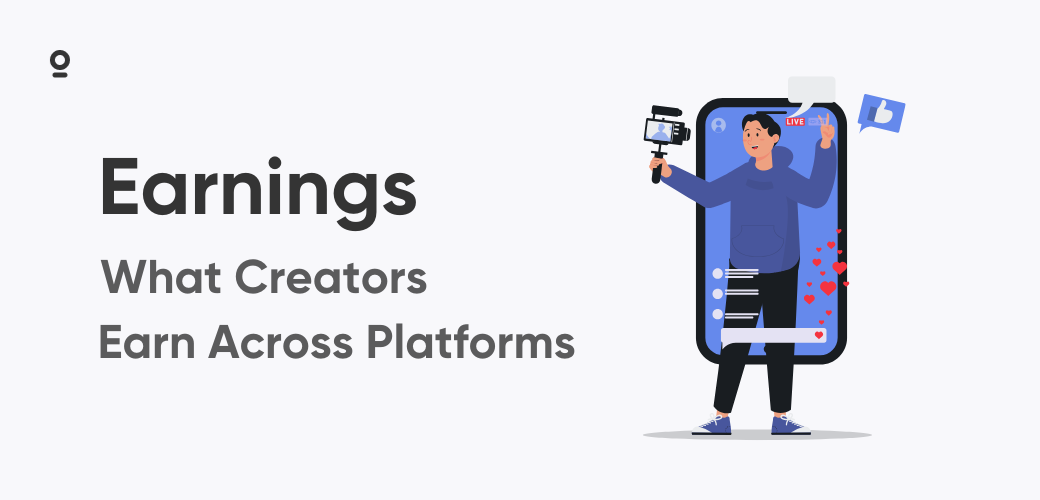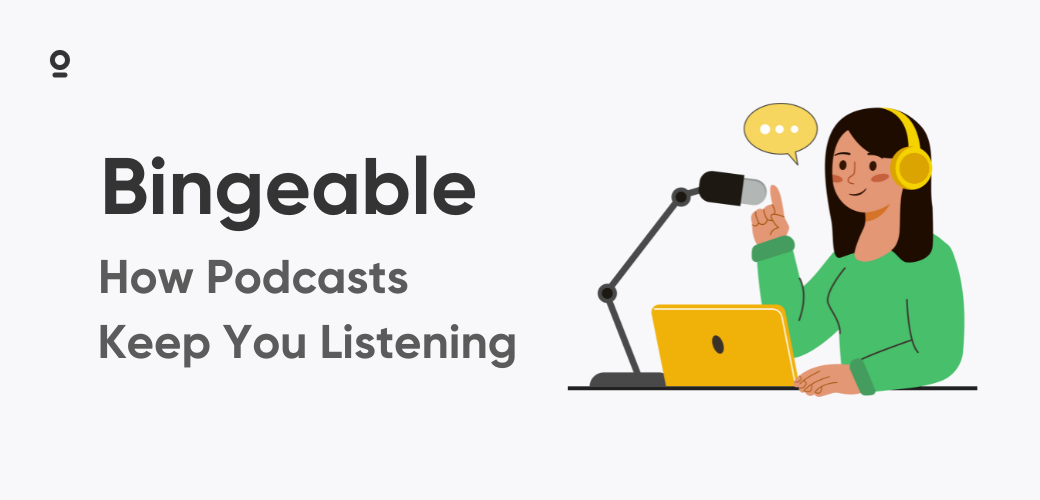Understanding content creator earnings is important for anyone looking to turn their creative work into a sustainable income. But how much do content creators really make? Look around, and you'll see two extremes. One shows six-figure screenshots while another warns that the average creator salary barely covers coffee money. Both views hold truth because earnings are wildly uneven. Recent creator economy statistics reveal that 96 percent of creators earn less than $100,000 per year. Surveys point to the same reality: most people earn very little, and a small minority collect life-changing sums. Nearly every success story began at zero and climbed one step at a time, stacking fresh revenue streams along the way.
How Much Do Digital Creators Actually Make? A 2025 Reality Check
Researchers agree the curve is sharply skewed toward the low end. More than two-thirds of creators report making under one thousand dollars in an entire year, and forty-six percent of full-timers still fall below that line. Consider four loose tiers.
- Beginners (usually in their first twelve months) often land anywhere from a few dollars to about one thousand during a strong month while they learn workflows and build audience trust.
- Part-time creators split attention between a day job and content. Typical monthly earnings fall between one hundred and three thousand. Only a slim slice reaches the top of that span without stepping into full-time hours.
- Full-time independents with at least three years of practice most commonly report twenty-five hundred to fifteen thousand each month, though averages swing hard by niche and language.
- Elite four percent pull in at least one hundred thousand a year. Their share of total creator economy earnings is outsized, yet their stories prove the ceiling is high when audience growth and monetization click.
How Much Does a Content Creator Make on Each Platform?
Let's break down the specific earning potential across major content platforms, starting with one of the most stable revenue generators in the creator economy.
Podcast Monetization: Building Revenue Through Audio
Podcasting keeps rewarding hosts with loyal listeners and stable ad rates. Host-read spots usually sit between eighteen and twenty-five dollars CPM, and many sponsors wait until an episode averages five thousand downloads before committing budget. Membership services let fans pledge one to five dollars on common starter tiers and sometimes up to twenty-five for premium extras. Seasoned hosts bolt on ticketed live shows, private feeds, or consulting, which can push annual totals well beyond ad-only figures. Clean audio is the multiplier here, making Zencastr's local recording and mastering tools a common staple in podcast monetization stacks.
YouTube Creator Earnings: Beyond Ad Revenue
Ad revenue on YouTube swings with topic choice. Finance tutorials or B2B software reviews often reach ten dollars per thousand views after the platform's cut, while broad entertainment can hover closer to one. Brand integrations pay more Backstage's sponsorship analysis pegs twenty to thirty dollars for each thousand views as typical and channel memberships at four ninety-nine add predictable cash, though YouTube keeps thirty percent. Tie those layers together and a focused channel near one hundred thousand subscribers often lands between five and fifteen thousand dollars a month. Pass the million-subscriber mark and that spread widens from low five-figure earnings at the floor to six figures at the top, depending on engagement and side products.
Instagram and TikTok: How Digital Creators Make Money on Social Platforms
Instagram still favors polished sponsorships. Industry pricing guides put nano creators with one to ten thousand followers at roughly ten to one hundred dollars per post. Shift into the micro bracket ten to one hundred thousand followers and brands often quote one hundred to eight hundred dollars depending on engagement and content type.
TikTok pays only a few cents per thousand views through its Creator Fund, while its newer Creativity Program Beta can lift that to roughly ten to sixty cents depending on watch time. Nano accounts may earn five to fifty dollars for a sponsored clip, while micro accounts negotiate packages in the one-hundred-fifty to five-hundred range. Viral reach can reset a rate card overnight, which keeps the upside intriguing despite low fund payouts.
Twitch and Live Streaming: Converting Viewers into Income
Livestreamers lean on three cash pillars: paid subscriptions, one-off tips, and sponsorship overlays. A five-dollar sub nets the streamer about half after fees. Ad breaks and overlay campaigns average two to ten dollars CPM for mid-tier channels. Tournaments, co-streams, and merch drops round out the mix, creating a viable digital creator salary for streamers who treat their channels like daily shows.
Key Factors That Impact Your Digital Creator Salary
Niche matters first. Advertisers pay more to reach audiences with high lifetime value, which is why personal finance, B2B tech, and certain health specialties top most CPM charts. Engagement follows close behind. A three-percent rate likes plus comments plus shares divided by total followers usually triggers premium sponsor interest. Diversifying revenue then shields income from platform shifts, and production polish helps close deals because brands equate quality with safety.
How to Increase Your Content Creator Revenue Streams
- Pick a focused topic. Depth beats breadth, and authority in one lane attracts premium sponsors.
- Upgrade one production element each month. Sharper thumbnails, better sound treatment, or tighter scripting compound over time.
- Collect email addresses early. Algorithms change yet your list remains yours when launching new products.
- Add income streams gradually. Introduce a fresh layer only after the previous one feels stable to avoid audience fatigue.
- Bundle sponsorships. Multi-episode or multi-video deals lock rates and cut admin work.
Calculating Creator Earnings by Platform: A Practical Guide
Grab three numbers: average views or downloads, niche CPM, and planned income layers. For podcasts, multiply downloads per episode by the CPM, divide by one thousand, then factor in episodes per month. Add projected supporter pledges and product sales for a clearer ceiling. Keep forecasts conservative for the first quarter, then update with real data.
Why Audio Quality Drives Creator Economy Earnings
Viewers tolerate mediocre lighting, yet they abandon muddy audio fast. Crisp sound lifts completion rates, which in turn boosts algorithm reach and total ad impressions. Local recording avoids internet hiccups, and noise reduction shortens editing time. Sponsors notice that polish when judging brand fit.
How Much Does the Average Creator Make? The Bottom Line
So how much does a content creator make? In 2025 the best answer remains "it depends," though the levers are clearer than ever. Most newcomers earn little during year one, then climb by serving a defined audience and stacking revenue streams. A select few push into six figures by treating their channels like real businesses and guarding quality from start to finish.
Whether you publish long-form interviews or sixty-second sketches, the path to healthy creator economy earnings starts with steady output, deep audience trust, and a deliberate monetization mix. Ready to sharpen your audio and appeal to better sponsors? Take Zencastr's free trial and hear the difference local recording makes.







